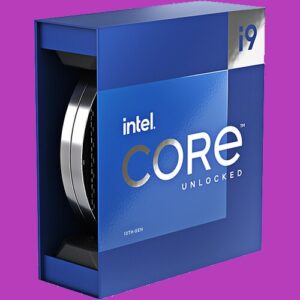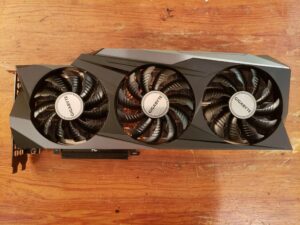With AMD’s newest Zen 4 processors and their associated AM5 socket type, we also received a new generation of motherboards with which to pair these.
The A620, B650, B650E, X670, and X670E chipsets are all compatible with 7000-series AMD CPUs such as the Ryzen 5 7600X, Ryzen 7 7700X, Ryzen 7 7800X3D, Ryzen 9 7900X, Ryzen 9 7900X3D, Ryzen 9 7950X, and Ryzen 9 7950X3D, but don’t support processors from past generations.
See Also: Motherboard Naming Conventions Explained

Today’s Deals
- 55% OFF: Nextorage 2TB NVMe SSD 7300MB/s Write 6900 MB/s Read |
$249.99$109.99 - STGAubron ABR0522 Tower with GTX 1660 Super and Core i3-10100F |
$550$495 - HP Victus 15L with RTX 3060 and Core i7-12700F
- Ryzen 9 5900X 12-Core, 24-Thread CPU |
$550$349.99 - ABS Stratos Aqua with Core i5-13400F, RTX 4060 Ti, 16GB DDR5 |
$1499.99$1199.99
With five new chipsets, it may feel difficult to figure out which one is best for your new Ryzen 7000-series PC. In this article we’ll compare the A620, B650, and X670 chipsets (as well as the latter two’s E-series counterparts) in regards to cost, typical form-factor, connectivity, hardware support, overclocking support, and more, as well as which CPUs each is best paired with.
What is Chipset?
First, it’s essential to understand what chipset means. In the most literal sense of the word, the chipset (also called the Southbridge) is a component that is built into the motherboard. It’s directly connected to many components in the motherboard, and the CPU communicates with components through the chipset.
See Also: AMD 500-Series Chipsets Comparison
Chipset defines certain functionalities in a motherboard, but so does the manufacturers’ design. For instance, look at the specs below pulled from Intel’s H610 Chipset Specifications Page:

The H610 chipset supports a maximum of PCIe 3.0. However, if we look at the specs for the Asus Prime H610M-E D4, we find that it includes a PCIe 4.0 slot.

This slot communicates directly with the CPU, while the Chipset controls the x1 slot. In other words, if a manufacturer wanted to create an H610 motherboard with PCIe 5.0, they certainly could. You most likely won’t ever see this though, since H610 is targeted towards consumers who want an affordable build. If someone wanted the latest technologies they’d buy a top-of-the-line Z690.
As you can see, chipset doesn’t define every aspect of a motherboard, as third-party input has a role in this. Still, there are certain trends that tend to remain true across most models of a chipset, and this is what we’ll be looking at.
Keep in mind that some features (such as memory overclocking) are strictly determined by chipset. For instance, in no case will you be able to overclock your RAM past the maximum XMP limit on an H610 board. We’ll cover this side of things as well. After reading this article, we hope you have a more complete idea of what each chipset entails, and which one is best for your specific needs.
AMD Extreme Chipsets
Before we get into any comparisons, it’s essential to understand what the “E” at the end of two of these chipset names means. It stands for “Extreme” and denotes the chipset’s support of either a x16 or two x8 PCIe 5.0 lanes. The end result is that Extreme chipsets support up to 24 PCIe 5.0 lanes, while non-Extreme models, even of the highest-end X670 variety, will max out at 8.
Note that this does not mean a non-Extreme motherboard won’t have a PCIe 5.0 x16 slot or other PCIe 5.0 lanes. The chipset’s lanes make up only a portion of total lanes since CPU lanes must also be accounted for, so many non-Extreme motherboards will still be equipped with a PCIe x16 slot for use with your video card.
In short, Extreme motherboards support more PCIe 5.0 lanes than non-Extreme models. This won’t have a very noticeable impact on performance with the current generation of technology, so in general users are best off opting for a non-Extreme motherboard if it’s cheaper than the comparable Extreme make.
A620 vs B650 vs B650E vs X670 vs X670E: Overview
Before we get into a lower-level breakdown of each individual chipset (excluding Extreme varieties, since we’ve already covered the slight difference that these present), let’s look at a side-by-side comparison of each AMD 600-series chipset:

A620 vs B650 vs B650E vs X670 vs X670E: Similarities
While each of these chipsets differ in many aspects, they share some similarities. Most glaringly, they’re all designed with the same AM5 socket for use with Ryzen 7000-series processors. Any 7000-series CPU can be paired with any 600-series motherboard, although not all of these motherboard-CPU combos are an ideal match.
Since all Ryzen 7000-series SKUs are DDR5-exclusive, all 600-series motherboards, even the cheapest A620, support only DDR5 RAM. This shouldn’t present too much of an issue these days, since DDR5 memory has come down massively in price since its release. At least a few 16GB 4800MHz kits can be had for under $50, so buying the newest RAM won’t necessarily break the bank.
Speaking of memory, all of these motherboards allow users to overclock their RAM with AMD’s EXPO (which is essentially their equivalent of XMP).
A620
AMD’s A620 chipset is by far the cheapest, with many A620 boards costing less than $100 and several going as low as $85 at the time of writing. Features are strongly correlated to price, so it should come as no surprise that A620 is the most bare-bones chipset by far.
It’s the only chipset that doesn’t allow users to overclock their CPU. AMD’s A-series boards have historically done this, so this wasn’t unexpected.
The A620 chipset doesn’t support any PCIe 5.0 lanes, and as it has no Extreme version there isn’t any variation that does. Since it’s the lowest-end type of motherboard, manufacturers are extremely unlikely to add any PCIe 5 lanes, so A620 boards will almost exclusively be limited to PCIe 4.0, even in the x16 graphics card slot. This isn’t much of a concern, since virtually no GPU currently maxes out the bandwidth of PCIe’s 4th revision.
A620 boards also have the least amount of connectivity overall. The chipset itself supports a maximum of 32 PCIe lanes, which is four less than B650/B650E and twelve less than X670/X670E. Generally, you’ll only see a single PCIe 4.0 x16 lane, and perhaps a couple 3.0 x1 lanes if you’re lucky. That’s the configuration on Asus’ TUF Gaming A620M-PLUS, which is one of the nicer A620 boards available; many feature only a single x16 slot.
You’ll usually find 4 SATA ports on an A620 motherboard, which is more than enough for most users, as that will easily accommodate up to 80TB of storage, not to mention NVMe SSDs.
A620 boards’ thermals will usually be less impressive, so expect fewer and less powerful VRMs, as well as minimal heatsinks. Since you can’t push your CPU’s limits by overclocking it with one of these boards, there’s no reason to manufacturers to provide these boards with over-the-top horsepower.
Finally, A620 boards are almost exclusively available in the Micro-ATX form-factor. Micro-ATX tends to be the cheapest to manufacture, so budget-friendly boards usually adhere to this size specification. Since A620 is supposed to be AMD’s budget-oriented line, this makes perfect sense.
Best CPUs for A620
|
$198.94
|
$279.97
|
$377.99
|
With their generally dialed-back power delivery systems, A620 motherboards are best-suited for budget-oriented PC builds centered around a Ryzen 7000-series processor, in particular AMD’s 65W Ryzen 5 7600, Ryzen 7 7700, or Ryzen 9 7900. These come with lower clocks and consequently decreased power draws out of the box, so they’re the most optimal chips for A620.
The R5 7600 is particularly well-matched with an A620 motherboard, as it’s a good deal cheaper than the other two aforementioned options. Since the cheapest A620 boards currently cost $40-50 less than the cheapest B650s (the next step up in caliber), their drawbacks are usually only justified if you’re working with a fairly tight budget.
If your CPU costs, say $400, spending another $50 for a nicer mainboard isn’t a big deal. Thus, we recommend most users upgrade to a mid-range B650 when building a system around anything nicer than a Ryzen 5 7600.
B650
Next, we have B650. This chipset represents AMD’s mid-range, and is by far the most widely used.
Unlike A620, B650 supports the ability to overclock the CPU as well as memory. While not present in ever single model, the majority of B650 motherboards, even those of the non-Extreme variety, have at least a PCIe 5.0 x16 slot, as well as a PCIe 5.0 M.2 slot for full support of the latest generation of NVMe SSDs.
B650 boards also tend to have a greater quantity of PCIe slots than comparable A620s. For instance, many Micro-ATX B650 models have two PCIe x16 slots, versus the single x16 that’s typical of an A620.
Unlike A620, B650 occupies a much wider array of form-factors. You’ll find a sprinkling of sizes all the way from mini-ITX (like Gigabyte’s B650I Aorus Ultra) to EATX (such as ASRock’s B650E Taichi). The B650 market is dominated by micro-ATX and ATX boards, with five or six ITX options and only a few EATX makes.
You can expect more robust power delivery systems on a B650 motherboard than with a comparable A620, as well as support for higher-bandwidth USB interfaces on more ports. As with A620, four SATA ports is standard.
The cheapest B650 motherboards current start at around $125, with the bulk of them falling into the $150-250 price range, and some high-end models selling for as much as $830.
Best CPUs for B650
|
$209.00
|
$312.99
|
$409.00
|
An argument could be made that a B650 motherboard is the best choice for any 7000-series CPU. Some of the pricier models have insane power designs that can best many X670 boards in overclocking. For example, Gigabyte’s B650E Aorus Master has an incredible 16+2+2 power phases.
B650 and B650E truly are the most versatile chipsets of AMD’s current-gen product stack, as they’re a superb match for any CPU. With that said, our favorites for use with B650 are the Ryzen 5 7600X, Ryzen 7 7700X, and Ryzen 7 7800X3D. X-series CPUs are faster out of the box (and surprisingly, often cheaper) than non-X processors, so these are the obvious choice.
We picked these three in particular because they make up AMD’s high-mid-range. When building with the highest-end Ryzen 9 chips, some may find it worthwhile to upgrade to an X670 motherboard for the additional connectivity and more bountiful newest-gen PCIe slots.
To be clear, that’s not to say that you shouldn’t put together a PC with a R9 7950X3D and a B650 motherboard. As long as you take care not to purchase an absolute bottom-of-the-barrel model, you shouldn’t have any issues whatsoever.
X670
The successor to the X570 chipset, X670 continues the X-series motherboard’s tradition of catering to enthusiasts by providing massive amounts of connectivity, the greatest overclocking potential, and often copious heatsinks.
Virtually any X670 board will come equipped with a PCIe 5.0 x16 slot for your graphics card, at least one PCIe 5.0 M.2 slot, and a smattering of other PCIe 5.0 lanes. Both X670 and X670E support up to 8 SATA ports, with anywhere between 4-8 being typical.
Somewhat surprisingly, X670 motherboards currently only come in mini-ITX, ATX, and EATX form-factors, with micro-ATX being noticeably absent from the mix. This makes good sense when you consider that the primary purpose of mATX boards is to provide buyers the best cost-efficiency. Since X670 solely targets enthusiasts, there’s really no need for this mid-sized form-factor.
Even the cheapest X670 models have very potent power delivery systems in place. Unsurprisingly, these boards cost substantially more than B650s on average, with the cheapest one currently going for about $250. On the high end, X670s can run as expensive as $2000 or even more, depending on the market.
Best CPUs for X670
|
$340.00
|
N/A
|
$472.00
|
$699.95
|
If you’re going to fork over the amount of money it takes to buy a decent X670 motherboard, you more or less have to buy an X-series Ryzen 9 processor to reasonably justify the expense.
This category is comprised of the Ryzen 9 7900X, 7900X3D, 7950X, and 7950X3D. You really can’t go wrong with any one of these CPUs, but be warned: They aren’t cheap.
A620 vs B650 vs B650E vs X670 vs X670E: Final Thoughts
In short, the choice of AMD 600-series chipset boils down to what CPU you’re planning to purchase, and how much money you’re willing to spend. For a super-cheap AM5 build with a non-X-series chip, you’ll be fine saving money with an A620 motherboard.
If you’re using an X-series CPU that’s not a Ryzen 9, B650 is certainly your best bet. Whether you opt for a B650 or B650E doesn’t really matter — just choose the board based on the features you’re looking for, you can’t go wrong with either. Even a R9 build can definitely be built with a B650 board, just don’t cheap out if you take this route.
Finally, X670 and X670 Extreme motherboards are ideal for expensive, no-holds-barred, high-performance gaming rigs or workstations. They’ll cost an arm and a leg, but for high-octane overclocking capabilities they’re your best option.
















